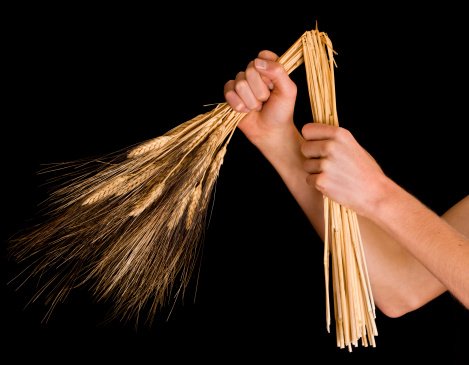Gluten intolerance has a reputation of one of the most common diseases of the present. There is an increasingly number of people affected by this disease, not to mention the number of those who no longer want to consume this protein complex at all.
Gluten Intolerance
Gluten, the protein complex found in some cereals (wheat, rye, barley and, of course, bakery products containing these raw complex) occurs in people manifesting sensitivity, lesions in their small intestine. Thus, nutrients from food are not absorbed fully and can appear symptoms such as weakness, fatigue, bloating, stomach pain and abnormal stools.
The body is manifested through these similar symptoms especially during the days with stress. Therefore, although statistics have determined the number of people affected by celiac disease (gluten intolerance actually determined) as between 1 in 300 and 1 in 100, in fact, sufferers are more numerous because many were not examined by a doctor and are unaware they carry this burden, because of similar symptoms.
In conclusion, gluten intolerance force you to eliminate wheat and other bakery products that contain gluten from your diet. But what can you eat instead?
Let’s see what the best alternatives for a gluten-free diet are.
1. Coconut milk.
Unfortunately, most of the dairy products contain flour added to give consistency. It is not necessarily a big problem, but for those who have gluten intolerance coconut milk seems to be the best solution.
Silky texture and subtle flavor make coconut milk, ideal for soups, risotto, pasta sauces, muffins or even as a substitute for buttermilk.
2. Buckwheat flour
has no gluten and has actually the same properties as wheat flour, and is perfect for creams, dough, and sauces. It has a chocolate aroma when cooked.
3. Chia flour.
Chia is a plant native to South America, contains omega 3 and is an excellent source of fiber. It is perfect to replace wheat bread and oatmeal.
Chia when mixed with water becomes gelatinous, with a structure that mimics the gluten elasticity so that chia flour is perfect for dough.
4. Tapioca
has no gluten. It is perfect in sauces, less dense dough and creams.
5. Millet flour
has its own sweetness that makes it ideal for sweet preparations. It combines very well with almond or brown rice flour.
6. Peanut flour
is an excellent flour through its fine and interesting taste that it gives to bread or sweet dishes such as muffins, biscuits and cookies. Peanut flour is very rich in nutrients, healthy fats and tastes great.


